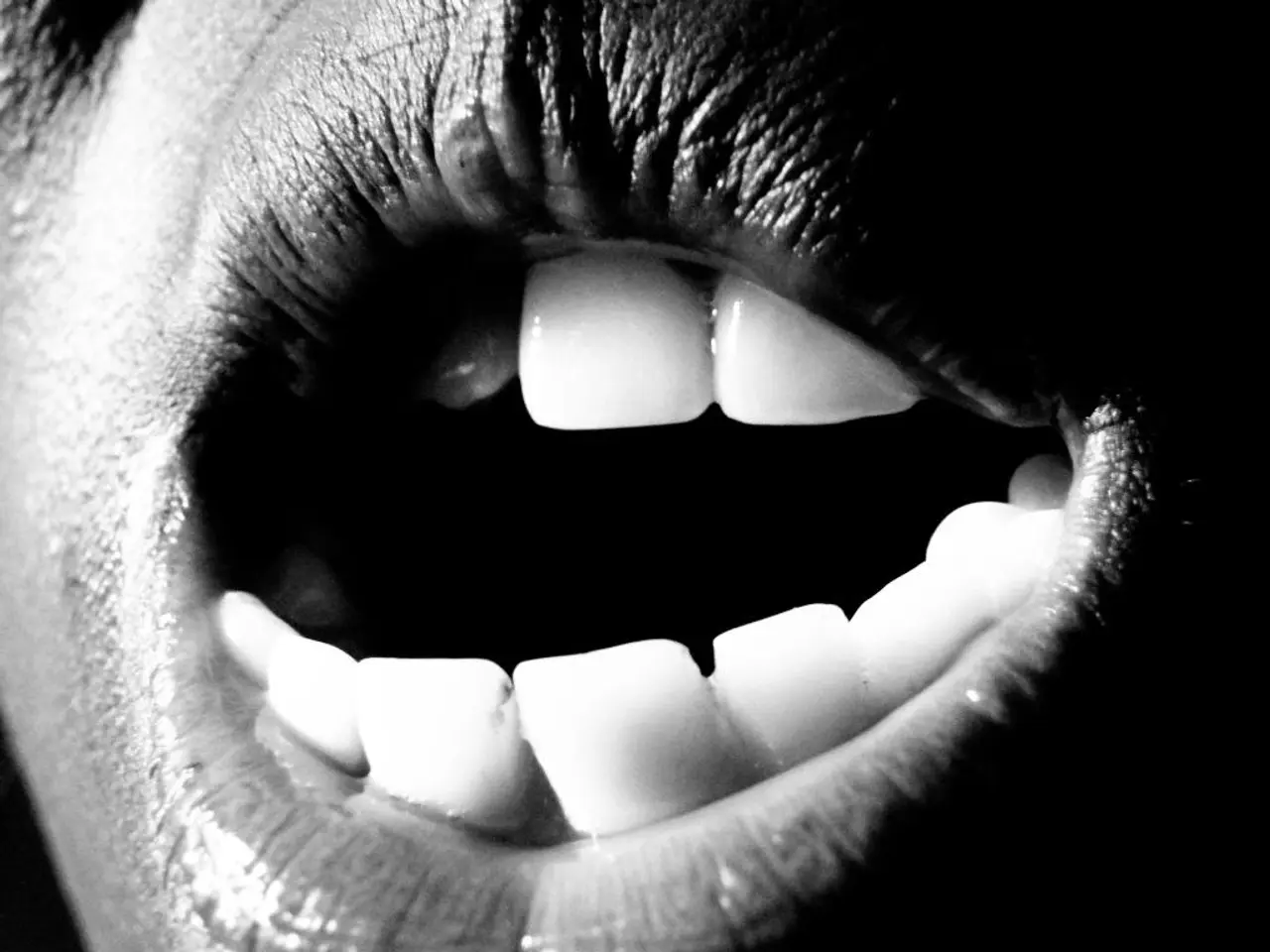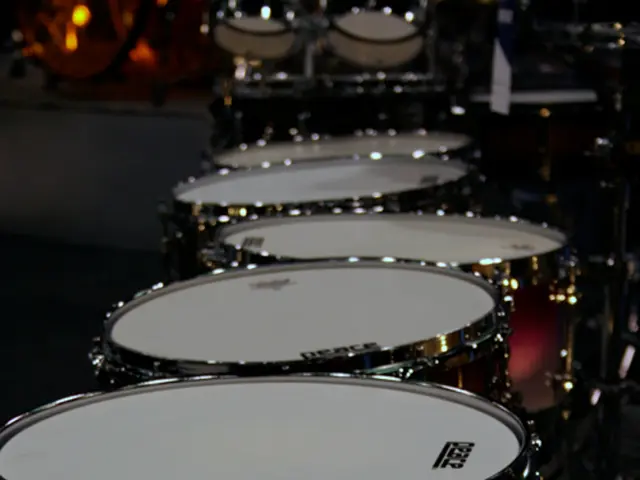Guide to Timing Food Consumption After Using Whitening Strips for Oral Health Safety
In the quest for a brighter, more radiant smile, teeth whitening strips have become a popular choice. However, it's essential to understand the dos and don'ts to ensure the best results and minimize potential side effects.
Teeth whitening strips contain hydrogen peroxide or carbamide peroxide as their active whitening ingredient. After application, the whitening process temporarily opens the pores of your enamel, making your teeth more susceptible to staining and irritation. To mitigate these risks, dentists recommend following a specific eating plan and gentle oral care practices.
Immediately after using whitening strips, it's best to avoid eating or drinking anything except water. Ideally, wait at least 30 minutes or more before consuming food or beverages. This helps minimize gum irritation and reduces the risk of staining newly whitened teeth[1][3].
Avoid acidic, hot, or cold foods and drinks right after whitening since these can exacerbate enamel sensitivity and irritate gums[2][4]. Use a soft-bristled toothbrush and non-abrasive toothpaste if brushing after whitening, waiting at least 30 minutes before brushing[3].
Limit consumption of stain-causing foods and beverages, such as coffee, tea, red wine, and soda, especially soon after whitening[1]. Consider chewing sugarless gum to neutralize acids that can cause staining[1].
To maximize the results of whitening treatment, consider following a "white diet" for at least 24-48 hours after using the strips. Opt for bland, light-colored foods like white rice, chicken, potatoes, and clear liquids like water or milk[5]. Dairy products like milk and cheese can help maintain a whiter smile after whitening treatments, as they contain calcium and phosphorus that strengthen teeth and protect them from acid erosion.
Incorporate crunchy fruits and vegetables like apples, carrots, and celery into your diet to help maintain a whiter smile after whitening treatments. These foods can scrub away surface stains and plaque buildup[6].
Saliva plays a crucial role in protecting teeth after whitening by helping to remineralize the enamel, neutralize acids, and wash away staining agents. Staying hydrated and chewing sugar-free gum can help stimulate saliva production[2].
Rinse your mouth with lukewarm water if you experience sensitivity after using white strips. If you have fillings or other dental work, experience severe tooth sensitivity, or have discoloration that may not be suitable for whitening strips, it's important to consult a dentist[7].
Overuse of whitening strips can potentially damage the enamel, cause uneven whitening, and irritate the gums. To maintain a bright smile after whitening, practice good oral hygiene, limit staining foods and drinks, use a straw when drinking staining beverages, and visit the dentist regularly for professional cleanings and checkups. Severe discoloration or staining may require professional whitening treatment from a dentist[8].
Lastly, avoid smoking or using tobacco products immediately after using white strips, as they can cause significant staining. By following these guidelines, you can enjoy a brighter, healthier smile after teeth whitening.
[1] American Dental Association. (2021). Teeth Whitening. Retrieved from https://www.ada.org/en/member-center/oral-health-topics/teeth-whitening [2] Colgate. (2021). Teeth Whitening: How to Keep Your Teeth White After Whitening. Retrieved from https://www.colgate.com/en-us/oral-health/cosmetic-dental-treatments/teeth-whitening/how-to-keep-your-teeth-white-after-whitening [3] WebMD. (2021). Teeth Whitening: Aftercare Tips. Retrieved from https://www.webmd.com/oral-health/guide/teeth-whitening-aftercare-tips [4] Mayo Clinic. (2021). Teeth Whitening: What You Need to Know. Retrieved from https://www.mayoclinic.org/healthy-lifestyle/adult-health/in-depth/teeth-whitening/art-20047013 [5] Healthline. (2021). What to Eat After Teeth Whitening. Retrieved from https://www.healthline.com/health/what-to-eat-after-teeth-whitening [6] Verywell Family. (2021). Foods That Stain Teeth and How to Prevent It. Retrieved from https://www.verywellfamily.com/foods-that-stain-teeth-and-how-to-prevent-it-4171833 [7] WebMD. (2021). Teeth Whitening: What You Need to Know Before You Start. Retrieved from https://www.webmd.com/oral-health/guide/teeth-whitening-what-you-need-to-know-before-you-start [8] Mayo Clinic. (2021). Teeth Whitening: What You Need to Know. Retrieved from https://www.mayoclinic.org/healthy-lifestyle/adult-health/in-depth/teeth-whitening/art-20047013
Incorporating good health-and-wellness practices can further improve the results of teeth whitening. Maintain a balanced diet rich in skin-care essential nutrients to support overall dental health, alongside regular, gentle fitness-and-exercise routines.
To ensure the long-term health of your teeth, consult a dentist for professional advice on dietary habits and oral care that complement teeth whitening, ensuring a brighter smile that is not only visually appealing but robust beneath the surface.







